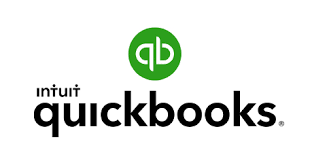SGL offers incredibly comprehensive and in-depth instruction covering every topic related to QuickBooks accounting. The QuickBooks Accounting Training Course covers the basic features and functions of the software application.
Course Outline
Commencing with QuickBooks
- Overview of QuickBooks
- Subscriptions for QuickBooks
- Using Mobile Devices
- Updates and the Always-Evolving User Interface;
- Securing
- The Test Run
Additional Resources Required
- Using the User Interface to Navigate
- Getting to the Gear Menu
- Making Use of the Top-Right Navigational Aids
- Examining the Help Menu
- Getting Around the Navigation Bar
- Processes in Accounting
- Comprehending the Principles of Generally Accepted Accounting
- Differentiating Between Cash Basis and Accrual Basis Accounting
- Distinguishing Between Financial Reports and Account Types
Establishing a New Company File
- Organizing and Configuring Your Company File: Commencement Date Establishment
- Checklist—Key Elements of the Scheme Customizing Your Company File
- The Accounts Chart
- Goods and Services
- Adding, Managing, and Adding Historical Transactions and Initial Balances for Users
Interacting with Customers
- The Sales Area
- Including Clients and Sub-Clients
- Bringing in Clients via an Excel or CSV File Changing, Merging, and Deactivating Clients
- Keeping Track of Sales Transactions
- Changing the Settings of Sales Forms
- Making Sales Invoices and Receipts
- Rules Regarding Prices
- Getting Paid by Customers
- Recording a Bank Deposit
- Creating Reports on Sales and Customers
- Correcting Errors
Engaging with Vendors
- The Cost Center
- The Cash Bar
- The List of Vendors Including Vendors
- Bringing in Vendor Information from a CSV or Excel File
- Changing, Merging, and Disabling Suppliers
- Creating Vendor Exchanges: Acquisitions and Outlays
- Changing the Expense Form’s Settings
- Establishing Bill, Expense, and Check Records
- Taking Care of Accounts Payable Accounts Payable Reports Additional Vendor Reports Bill-Setting Reports
Banking and Credit Card Transactions
- Overseeing the Banking Center
- How to Set Up and Use Bank Feeds
- Handling Bank Regulations
- Additional Financial Transactions
- Entering Transactions for Credit and Debit Cards
- Accounting Reconcilation
- Financial Feeds
- Undeposited Money
- Creating Financial Reports Adding and Disbursing Bills
Prerequisites
It is advised that students taking this course have a basic understanding of accounting concepts as well as a rudimentary understanding of the Windows operating system.
Overview
The QuickBooks Accounting Training Course offers tools to help accountants and bookkeepers learn the program, get certified, and attract clients.
The Professional Bookkeeper’s Guide to QuickBooks may be used by anybody to learn how to use QuickBooks. Whether or not you consider yourself to be a professional bookkeeper, you should still attend this course.
Over 80% of small businesses use Intuit’s QuickBooks accounting software. Your career and your connection with your current employer will both benefit from the online QuickBooks mastery certification course by including setup, advising, and help services in your menu.
.
The Universal Accounting ® QuickBooks Training Course is the most up-to-date and thorough training program currently offered. Furthermore, it is specifically made to meet the needs of small businesses. We pay close attention to ensuring that our students are ready for productive partnerships with small enterprises.
This course aims to help professionals who are just starting to use QuickBooks get over a number of challenges.
QuickBooks is a widely used accounting software used by several small businesses worldwide. Its objective is to support company owners in financial management, spending monitoring, and report production.
This thorough presentation will cover the fundamentals of QuickBooks and how you can use it to manage your business’s finances.
QuickBooks provides small company owners with a number of benefits. It helps save time by automating labor-intensive procedures like payroll administration and invoicing. Additionally, the tool facilitates the generation of financial reports and simplifies the process of managing costs.
Additionally, QuickBooks gives users the ability to access their data from any location with an internet connection.
Ultimately, this course focuses on practical and efficient methods for finishing the assignments given in the online accounting courses for Quickbooks. These QuickBooks tricks and shortcuts will help you work more efficiently and save time and money when handling accounting for your clients. It makes no difference if you have twenty years of accounting expertise or you have never worked in the field. The course’s objective is to provide you the useful information you need to expand your company.





